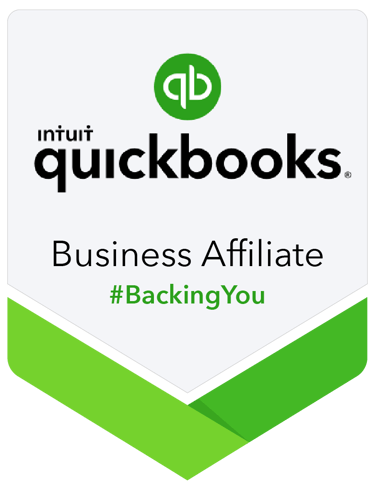Year-End Bookkeeping Checklist: 10 Steps Before Filing Business Taxes
Get your small business ready for tax season with this complete year-end bookkeeping checklist. Step-by-step guide to organize expenses, reconcile accounts, and maximize deductions.
BOOKKEEPINGTAX INFORMATION
Jerry Blanco
6/25/20254 min read


A Step-by-Step Guide to Organizing Your Books, Expenses, and Reports for Stress-Free Tax Season
Picture this: It's mid-March, and you're staring at a shoebox full of receipts, wondering how you'll possibly make sense of everything before the tax deadline. Sound familiar? You're not alone. Most small business owners dread tax season because they feel unprepared and overwhelmed by the bookkeeping maze.
But here's the good news: with a solid year-end bookkeeping checklist, you can transform tax season from a nightmare into a manageable task. Think of year-end bookkeeping as spring cleaning for your business finances—a little organization now saves you hours of headaches later.
Whether you're a freelance graphic designer working from your kitchen table, a small retail shop owner, or running a growing startup with a handful of employees, this guide will walk you through exactly what you need to do before filing your taxes. No accounting degree required!
Why Year-End Bookkeeping Matters More Than You Think
Before we dive into the checklist, let's talk about why this matters. Proper year-end bookkeeping isn't just about avoiding tax penalties (though that's important too). It's about:
Maximizing your tax deductions by ensuring you don't miss any business expenses
Saving money on accounting fees by presenting organized records to your tax preparer
Making better business decisions with accurate financial data
Avoiding IRS audits by maintaining clean, defensible records
Reducing stress by staying organized throughout the year
Your Complete Year-End Bookkeeping Checklist
Step 1: Gather All Your Financial Documents
Start by collecting every piece of financial paperwork from the year. This includes:
Bank statements for all business accounts
Credit card statements
Receipt files (digital and physical)
Invoices sent to customers
Bills and invoices from vendors
Payroll records
1099 forms from clients
Any other financial documents
Pro tip: Create a dedicated folder (physical or digital) labeled with the tax year. This becomes your command center for everything tax-related.
Step 2: Reconcile All Bank and Credit Card Accounts
Bank reconciliation is like balancing your checkbook, but for your business. Here's what to do:
Download your year-end bank statements from your online banking portal
Compare every transaction in your bookkeeping software with your bank statements
Identify and investigate any discrepancies between your records and the bank's records
Record any missing transactions such as bank fees, interest, or automatic payments
Ensure your ending balance matches the bank statement
Don't skip this step! Unreconciled accounts are red flags for lenders, investors, and the IRS.
Step 3: Review and Categorize All Expenses
This is where many small business owners get stuck. Go through every business expense and make sure it's properly categorized. Common business expense categories include:
Office supplies and equipment
Marketing and advertising
Professional services (legal, accounting, consulting)
Travel and meals
Rent and utilities
Insurance
Software subscriptions
Vehicle expenses
Important: Only include legitimate business expenses. That lunch with your spouse doesn't count unless you discussed business matters with a clear business purpose.
Step 4: Verify Income Recognition
Make sure all your income is properly recorded. This means:
Checking that all invoices sent to clients are recorded as income
Including any cash payments you received
Recording any barter transactions at fair market value
Accounting for any forgiven debts as income
Remember, the IRS expects you to report all income, regardless of whether you received a 1099 form.
Step 5: Review Accounts Receivable and Payable
Accounts Receivable (money customers owe you):
Follow up on any outstanding invoices
Write off any truly uncollectible debts (with proper documentation)
Ensure all customer payments are properly recorded
Accounts Payable (money you owe to vendors):
Pay any outstanding bills before year-end if you want to deduct them this year
Record any bills you've received but haven't paid yet
Verify all vendor payments are properly categorized
Step 6: Handle Inventory (If Applicable)
If you sell physical products, you'll need to count your inventory at year-end. This process, called "taking inventory," involves:
Physically counting all unsold products
Valuing inventory at the lower of cost or market value
Recording any damaged or obsolete inventory
Updating your bookkeeping system with accurate inventory numbers
Step 7: Review Fixed Assets and Depreciation
Fixed assets are big-ticket items that last more than one year, like computers, vehicles, or equipment. For each fixed asset:
Verify the original purchase price and date
Calculate annual depreciation (or let your accounting software do it)
Record any assets you sold or disposed of during the year
Consider bonus depreciation opportunities for qualifying purchases
Step 8: Organize Employee and Contractor Information
If you have employees or work with contractors:
Gather all W-2 and 1099 information
Verify payroll tax deposits were made correctly
Ensure all payroll records are complete and accurate
Prepare year-end payroll reports
Step 9: Review Tax Deductions You Might Miss
Many small business owners overlook valuable deductions. Don't forget about:
Home office expenses (if you work from home)
Business use of your personal vehicle
Professional development and training
Business meals and entertainment (with proper documentation)
Business insurance premiums
Professional memberships and subscriptions
Step 10: Generate Essential Financial Reports
Before wrapping up, create these key reports:
Profit and Loss Statement (shows income and expenses for the year)
Balance Sheet (shows assets, liabilities, and equity at year-end)
Cash Flow Statement (shows how cash moved in and out of your business)
Most bookkeeping software can generate these reports automatically once your data is clean and organized.
Common Year-End Bookkeeping Mistakes to Avoid
Mixing personal and business expenses in the same account
Forgetting to record cash transactions
Waiting until the last minute to organize everything
Not keeping receipts for business expenses
Failing to reconcile accounts regularly throughout the year
Making This Process Easier Next Year
The best time to prepare for next year's taxes is right now. Consider:
Setting up a simple bookkeeping system if you don't have one
Scheduling monthly financial reviews to stay on top of your books
Using bookkeeping software to automate routine tasks
Working with a professional bookkeeper to maintain accurate records year-round
Ready to Tackle Tax Season?
With this checklist in hand, you're well-equipped to organize your books and make tax filing much smoother. Remember, good bookkeeping isn't just about tax compliance—it's about understanding your business's financial health and making informed decisions.
The key is to start early and work systematically through each step. Don't try to do everything in one marathon session. Instead, tackle a few sections each day until you've completed the entire checklist.
Need help getting your books in order? Consider working with a professional bookkeeper who can guide you through this process and set up systems to make next year even easier. A small investment in professional help now can save you significant time and stress later.


